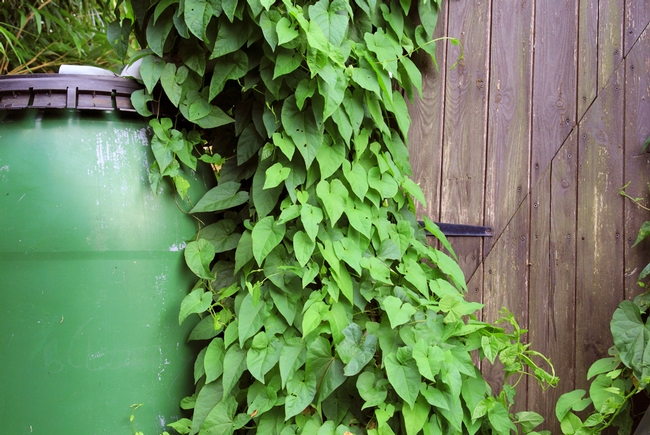Water Catchment
By Nancy Hartwick UCCE Master Gardener
A lot of rainwater goes into storm drains and is wasted. Is there a way to save and use it? Tom, Morro Bay
An average roof collects 600 gallons of water for every inch of rainfall. That is a lot of water to waste. An easy to build collection system will allow you capture a substantial portion of that water for use on your property. The simplest scheme requires only downspouts to collect the water that runs off your roof. Water from the downspout should be directed onto a lawn or ornamental landscaped area, rain barrel, rain garden, or gravel areas that can accept the water.
If downspouts are not sending the water to a desired area, simply redirect it using downspout elbows and extensions. If your house doesn't have gutters, hang rain chains from the eaves to guide rain water to areas where you want it to collect.
If you want to store water for future use, use a rain barrel. The barrel or other large container can be new or used. If it is used, make sure it was not used to store toxic substances. You will need to install a tap near the bottom of the barrel to facilitate drainage.
Fit gutters with mesh to prevent leaves and other debris from blocking drainage. Install insect proof screens or flap valves at end of all pipes entering the tank and overflow outlets to exclude mosquitos and other pests.
Place the rain barrel on a level surface; build a platform if necessary. If the tank is not resting on pavement, spread pea gravel around it to prevent water from draining toward homes or other structures. Install a tap near the bottom of the barrel and you are ready to irrigate.
Reducing the amount of rainwater that enters storm drains helps prevent pollution of creeks and streambeds. By capturing water that may otherwise flow across polluted surfaces and pick up dirt, oil, and other contaminants before moving to our creeks, streams, and ocean, you will be protecting our diverse ecosystems .
